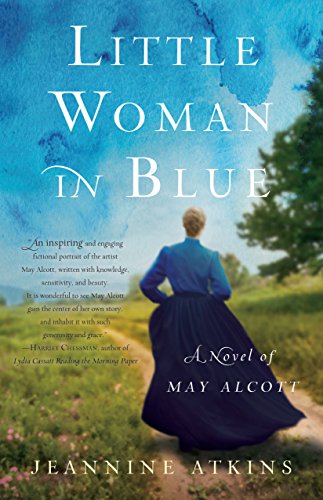Little Woman in Blue
Atkins’ elegantly understated work is the first novel to be written about May Alcott, a 19th-century artist whose talents were overshadowed by her older sister, Louisa. While it succeeds in drawing readers into the lives of the Alcotts of Concord, Massachusetts – their aspirations, values, insecurities, conflicts, and their love for one another – it’s more a portrait of a woman struggling to pursue her artistic dreams while hoping one day to become a wife and mother. May attracts many students to the local painting classes she teaches but knows she’s missing out, never having had the opportunity to visit Europe: “My art would improve with Michelangelo and Raphael to teach me,” she tells Louisa.
Although May enjoys a romance with Julian Hawthorne, the son of neighbors Nathaniel and Sophia, his poverty and lack of direction make him a bad choice as a husband for an ambitious woman. Once Louisa’s Little Women becomes a bestseller, a trip to Europe finally looks like more of a possibility. However, Louisa’s interpretation of May’s fictional counterpart – golden-haired Amy March, who dabbles in art but gives up her hobby to marry – shows May that her sister hardly knows her.
Atkins creates beautiful images with her writing: May and Julian’s moonlit boat excursion through the water lilies floating in the Concord River has the feel of an impressionist painting, and May’s observations of the bustling Parisian streets bring the city alive. Some sharper characterizations would have helped; the Alcott parents fade into the background, for instance, and without dialogue tags during lengthy exchanges, it can sometimes be hard to tell who’s saying what. A slight re-edit would be of benefit here.
While this is a quiet book, the characters’ strong emotions come through on the page. Thoughtful readers will appreciate the depictions of the sisters’ passion for their art and the challenges that 19th-century American women faced when they worked for a living.










